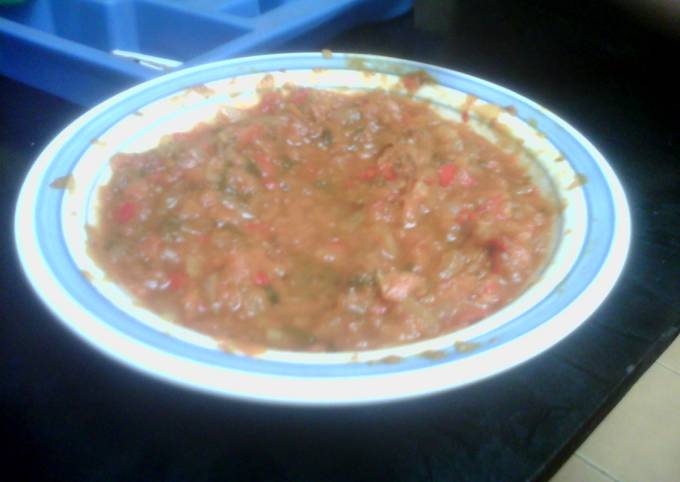
In 2010, the CDC reported that 1 in 25 foodborne illnesses between 19 was traced back to restaurant sauces (carelessly prepared or stored).


Mexican salsas were traditionally produced using the mortar and pestle–like molcajete, although blenders are now used.

Tamales are often identified according to the type of salsa they are filled with, either salsa verde, salsa roja, salsa de rajas, or salsa de mole. The type of pepper used for chiltomate varies by region, with fresh green chiles being more common than habanero in Chiapas. Chiltomate is a widely used base sauce made of tomatoes and chiles. Salsa verde is made with cooked tomatillos and is served as a dip or sauce for chilaquiles, enchiladas, and other dishes. Salsa fresca is fresh salsa made with tomatoes and hot peppers. Salsa is a common ingredient in Mexican cuisine, served as a condiment with tacos, stirred into soups and stews, or incorporated into tamale fillings. Types Various types of Mexican salsas, including moles A chorizo-and-egg breakfast burrito with salsa In addition to accompanying various fish, poultry, and meat dishes, it is also used as a condiment for baked potatoes, pasta dishes, and pizza.

In the United States, salsa is used in marinades, salad dressings, stews, and cooked sauces. Since the 2000s sweet salsas combining fruits with peppers like habanero, Scotch bonnet and datil have grown in popularity and are served with frozen dessert, cheesecakes, and pound cakes. Tomato-based salsas later found competition from salsas made with fruit, corn, or black beans. Mango pineapple salsa, made with jalapeños, red onion, and cilantro (coriander), served in a ramekin In 1992, the dollar value of salsa sales in the United States exceeded those of tomato ketchup. In the 1980s, tomato-based Mexican-style salsas gained in popularity. The use of salsa as a table dip was first popularized by Mexican restaurants in the United States. A dish of sauce or relish is as indispensable to the Mexican table as our salt, pepper, and mustard.ĭiana Kennedy, The Cuisines of Mexico History


 0 kommentar(er)
0 kommentar(er)
